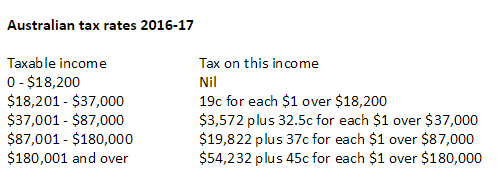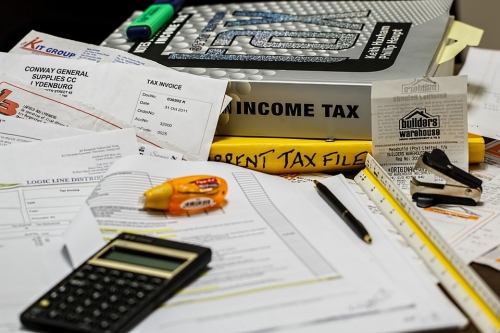It’s that time of year again – tax time. The Australian financial year runs from 1 July to June 30. This is followed by a flurry of activity as people around the country begin scrambling for their receipts to begin what used to be a laborious process of filling out forms and following up on loose ends.
The good news is that these days, filling out your tax return is easier than it’s ever been.
Tax file numbers and tax rates
First things first, you need to make sure that you have your tax file number sorted. This is a unique nine-digit number issued by the Australian Tax Office to help keep track of tax affairs. You can apply for this when you first arrive in Australia, depending on your visa. See Apply for a TFN.
This is important, because without it you will likely get stuck in bureaucratic nightmares trying to navigate anything to do with employment and taxation (if a workplace is willing to hire you without one – all formal employment arrangements involve exchanging this information). You can work without a tax file number, but until you provide it to your workplace they will tax you at the maximum rate.
You earn it, we tax it – that’s how it goes. Although Australia doesn’t tax as highly as countries such as Sweden and Norway, the percentage that individuals pay on income tax can be high. But in exchange for this, you get to have access to a great healthcare system and relatively generous social security support if you need it, as well as decent infrastructure and services all round.

Filling in your tax return
When it comes to filling in your tax return, you have choices. You can do it yourself or use the services of a registered tax agent. If your tax affairs have been a little complicated in the past year, you don’t feel confident going through the process or you would just like some assistance in making sure that you’re getting the most tax back that you can, you may like to use a tax accountant. It is also very common for people running small businesses to seek assistance from tax professionals.
Getting professional assistance with your personal tax return is more affordable than you might think. For example, H&R Block – Australia’s largest preparer of personal tax – offers in-person tax return services staring from $129. They also have online tax return assistance packages starting from $19.95, which suit people who are happy to fill in their own tax online but would like an accountant to give it a once-over before it is lodged with the tax office.
It is also worth noting that the cost of managing your tax affairs is tax deductible, so you will be able to claim this amount back.
Doing your tax return online with myTax
The Australian Tax Office has come a long way in making tax returns a simpler and more manageable process for regular people. Whereas before you had to go to the post office to pick up paper forms to fill in and send off, or download a specialized – but cumbersome, and not entirely user-friendly – software package called eTax, these days you are able to quickly and securely fill in your tax return online via myTax.
If you are an individual with relatively straightforward circumstances, myTax should be the easiest way to get your tax return done.
To use myTax there are a couple of things you’ll have to set up first. You need to have a myGov account, and it will need to be linked to the Australian tax office. If you don’t already have a myGov account, it’s worth spending a bit of time setting it up because it is a cornerstone for accessing any Australian government assistance online.
Once you’re in myTax, the process of doing your tax return is broken down into four steps:
• Contact details
• Financial institution details
• Personalise return
• Prepare return
Contact details is as simple as it sounds. All you have to do is check that the contact details you have recorded in the system are up-to-date, or provide them if they are not already recorded.
Financial institution details is also an easy one. In this section you just have to make sure that the tax office has your correct bank account details – because this is where they will be paying your tax refund, if you are eligible for one!
Personalise return is where you start to get into the nitty-gritty.
One of the things that makes filling out your tax return easy using myTax is that a lot of information is pre-filled for you. For example, Australian employers are obligated to provide certain information to the tax office, which includes your earnings and how much you were taxed. So this information should appear for you within the first couple of months of the new financial year. In the personalise return section, you will check over some of these details and answer a few yes/no questions about your circumstances.
You will be asked: “Were you an Australian resident for tax purposes from 1 July 2016 to 30 June 2017?”
What you need to know about this is that the Australian Tax Office does not use the same rules as the Department of Immigration and Border Protection. This means that you can be an Australian resident for tax purposes without being an Australian citizen or permanent resident. It also means that you may have a visa to enter Australia, but are not an Australian resident for tax purposes.
If you already have Australian citizenship or permanent residency, then obviously you are subject to the Australian taxation system. Outside of this, as a general rule, you will be an Australian resident for tax purposes if you:
• Are an overseas student enrolled in a course that is more than six months long at an Australian institution,
• Are visiting Australia, working and living in one location and have taken steps to make Australia your home, or
• Migrate to Australia and intend to reside here permanently.
Generally, you are a foreign resident for tax purposes if you:
• Are visiting Australia and for most of that time you are travelling and working in various locations around Australia, or
• Are either holidaying in Australia or visiting for less than six months.
Tax residency can also depend on whether the country you come from has a tax treaty with Australia, so you may need to check this. If you need help figuring out what this means for you, see Work out your residency status for tax purposes.
In the personalise return section you will also be asked to indicate if you had a spouse during the tax year, if you received a salary, wages or other income, and if you had deductions you want to claim.
Prepare return is the final step, and the part where you will have to invest the most of your time and effort.
You will review your payment summaries and make sure that the pre-filled information is correct, and everything that needs to be there is. If information is missing, you can enter it manually – your employer/s should have provided you with a payment summary in the mail.
You will also have to enter your tax deductions, and this can get complicated. You can claim up to $300 for work-related expenses that does not have to be substantiated, but outside of this you must be able to provide your receipts as evidence, and keep them for five years.
You can claim deductions for items including:
• Vehicle and travel expenses
• Clothing, laundry and dry-cleaning expenses
• Gifts and donations
• Home office expenses
• Interest, dividend and other investment income deductions
• Self-education expenses
• Tools and equipment
• The cost of managing tax affairs
Make sure to do your research so that you don’t miss out on claiming deductions you are entitled to. You will need to be careful not to make any false claims because there’s a chance you will be audited. See Deductions you can claim.
Australia has a world-class health care system, and you pay for it through your tax via the Medicare levy, which is 2% of your taxable income. However, as an expat – depending on your personal circumstances – you may be exempt from paying this. See Medicare levy exemption.
If you earn over $90,000 as an individual or $180,000 as a family, you will also be asked to pay the Medicare levy surcharge unless you have what the government considers an appropriate level of private hospital insurance. The idea is to encourage people to take out private hospital cover to reduce the demand on the public Medicare system, and it does tend to be worthwhile paying for private cover rather than the surcharge if you fall into this category. See Medicare levy surcharge.
How long does it take?
Once you’ve submitted your tax return it’s a relatively fast process. Normally you will receive your return – or debt, if you have underpaid – within a couple of weeks.
And remember, individual tax returns are due by 31 October – so get cracking!

